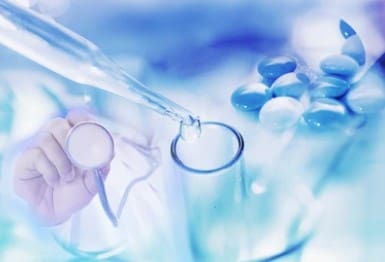
In pharmaceuticals, impurities are first and foremost a quality issue, as they have the potential to impair the efficacy of the drug. Secondly, impurities may also lead to safety issues. However, it is a generally accepted fact that some impurities are unavoidable and will be present in trace amounts.
Therefore, the identification and establishment of limits for impurities in active pharmaceutical ingredients (APIs) has become an important initiative for governments and the pharmaceutical industry.
The International Conference on Harmonization (ICH) was established in the 1990s to harmonize technical requirements for the registration of pharmaceuticals in the European Union, Japan and the United States. According to ICH guidelines, it is recommended to identify and characterize all impurities present at 0.10 % or higher levels.
The identification of impurities in APIs is a key analytical activity in the drug development process.
Organic impurities are the most common impurities in every API. They are formed during the synthesis of the API. The related impurities in the synthesis process can be derived from the starting materials, intermediates, reagents, ligands and catalysts used in chemical synthesis, as well as by-products from the side-reactions of the chemical synthesis [1].
In most cases, inorganic impurities are introduced from the synthesis process of the drug substance or are present as impurities in the excipients. Inorganic impurities are usually known and identified and include mainly the following:
Heavy metals:
These include elements such as arsenic, lead, cadmium, mercury, and others, which can be toxic to humans even at very low levels.
Inorganic reagents and catalysts:
These are chemicals used during the manufacturing process of the API that may be present as impurities. Examples include sodium hydroxide, sulfuric acid, and platinum.
Residual solvents:
Residual solvents are organic volatile chemicals used or produced in the manufacture of drug substances or excipients or in the preparation of drug products [1]. They pose a threat to human health. ICH classifies residual solvents into the following three categories based on their level of toxicity.
Class 1 solvents:
These are known to be the most toxic solvents and are considered to pose a significant risk to human health. Examples include benzene, carbon tetrachloride, and 1,2-dichloroethane.
Class 2 solvents:
These are solvents that have a moderate toxicity level and may pose a risk to human health if exposure is not properly controlled. Examples include ethanol, isopropanol, and methylene chloride.
Class 3 solvents:
These are solvents that have low toxicity levels and are considered to pose a minimal risk to human health. Examples include acetone, ethyl acetate, and toluene.
Reference
Qiu, F.; Norwood, D. L. Identification of pharmaceutical impurities. Journal of liquid chromatography & related technologies. 2007, 30(5-7): 877-935.
Isolation and Identification of API Impurities